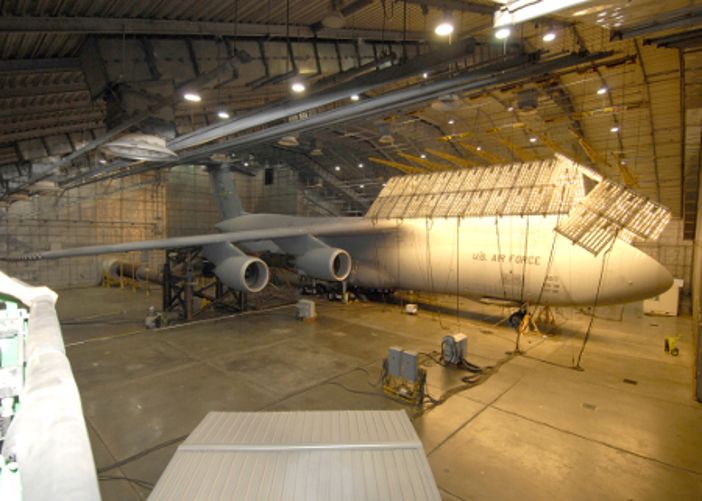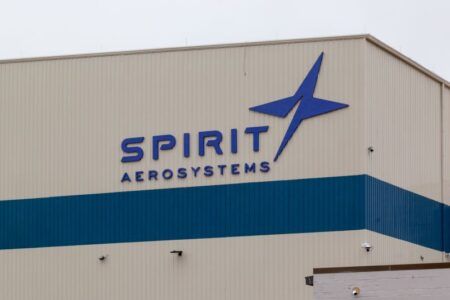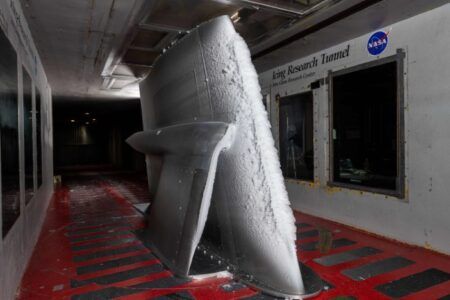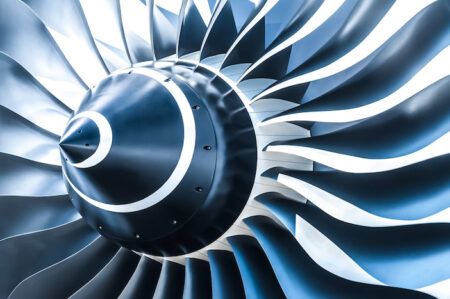The C-5M Super Galaxy undergoes extreme heat and ultraviolet exposure at the McKinley Climactic Laboratory (Image: Greg Murry)
A contract worker using an oxy-acetylene torch caused an explosion at the McKinley Climatic Lab last July that resulted in US$30m of damage, a report by the US Air Force’s accident investigation board has found.
The incident, which occurred in the air-mixing facility next to the main laboratory on July 5, 2017, sent a plume containing methylene chloride, a potentially toxic refrigerant, into the atmosphere.
The McKinley Climatic Laboratory at the Eglin Air Force Base, Florida, is the largest controlled-environment facility in the world and has five testing chambers. The Laboratory’s main chamber is 252ft (77m) wide, 260ft (79m) long and 70ft (21m) high. The facility can simulate temperatures from -65 to 165˚F (-53 to 74˚C) and can reach -65˚F (-53˚C) in less than 24 hours.
The Climatic Laboratory is used to test aircraft and other equipment under realistic conditions before their use in extreme environments. Vehicles tested at McKinley include a C-5 Galaxy transport, the F-35 fighter, B-1 and B-2 bombers, and M1A1 tanks.
The report into the accident was published last week by the US Air Force Materiel Command Ground Accident Investigation Board. It reveals that sub-contractors were removing a corroded structural beam within Air Makeup Unit I in the air-mixing facility using an oxy-acetylene torch, next to coils of pipe containing methylene chloride, commonly called R-30.
The Air Makeup Units mix and condition the temperature and humidity of air before it is blown into the climate chambers. They use salt water as a dehumidifier and R-30 as a refrigerant.
Although stable at room temperature and pressure, R-30 can rupture or explode when exposed to heat. The resulting fire caused extensive damage to Air Makeup Unit I and an adjacent air handling unit. The fire was assessed to consume most of the approximately 4,000 gallons (15,000 liters) of refrigerant.
The repair work was being carried out by Universal Fabricators for Florida-based Reliance Test and Technology, which performs operations and maintenance services for the McKinley Climatic Laboratory as a prime contractor with the United States Air Force. No one was seriously injured in the incident.
As well as the Main Chamber, the McKinley Climatic Laboratory has an Equipment Test Chamber which is 130ft (40m) long, 30ft (9m) wide and 25ft (8m) high with the same capabilities as the Main Chamber, for testing jet engines, small vehicles and turbine-driven ground power units.
The facility has a Sun, Wind, Rain and Dust Chamber, which blows rain at rates up to 25 inches (65cm) per hour on to vehicles. Heavy sand and dust storms can also be created in this chamber.
McKinley also has a Salt Fog Chamber that uses two steam-fed heat exchangers to create the temperatures required for tests in corrosive coastal salt fogs. The chamber is 55ft (17m) long, 16ft (5m) wide and 16ft (5m) high.
Finally, the Laboratory also has a 13 by 9 by 6ft (4 by 2.7 x 1.8m) Altitude Chamber that can create pressure altitudes as high as 80,000ft (24,000m) with a temperature capability of -80˚F (27˚C) to 140˚F (60˚C).
May 14, 2018





